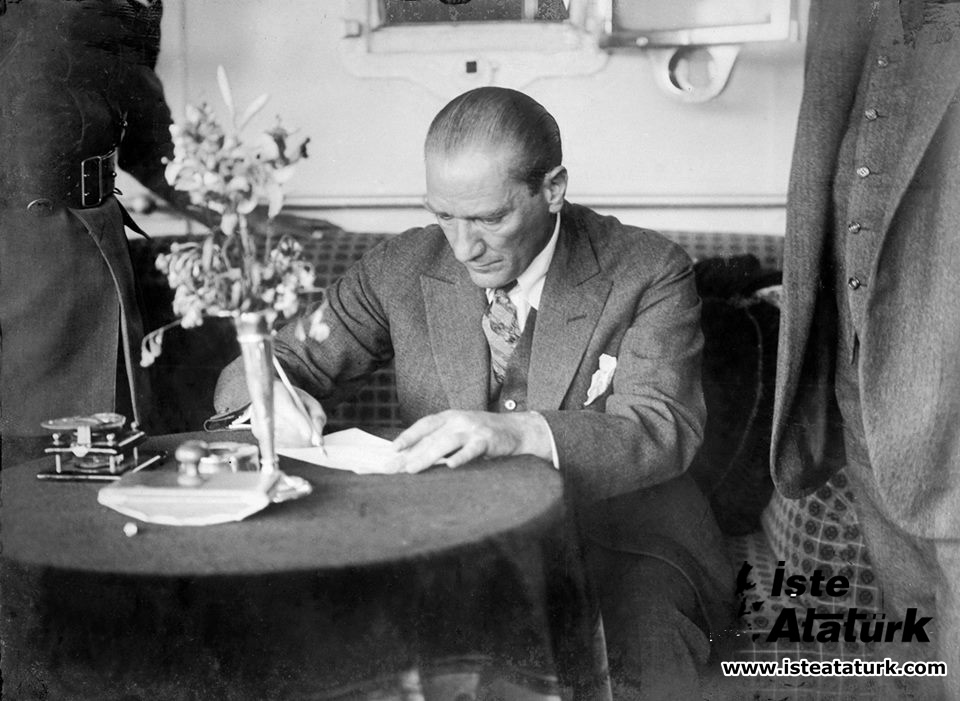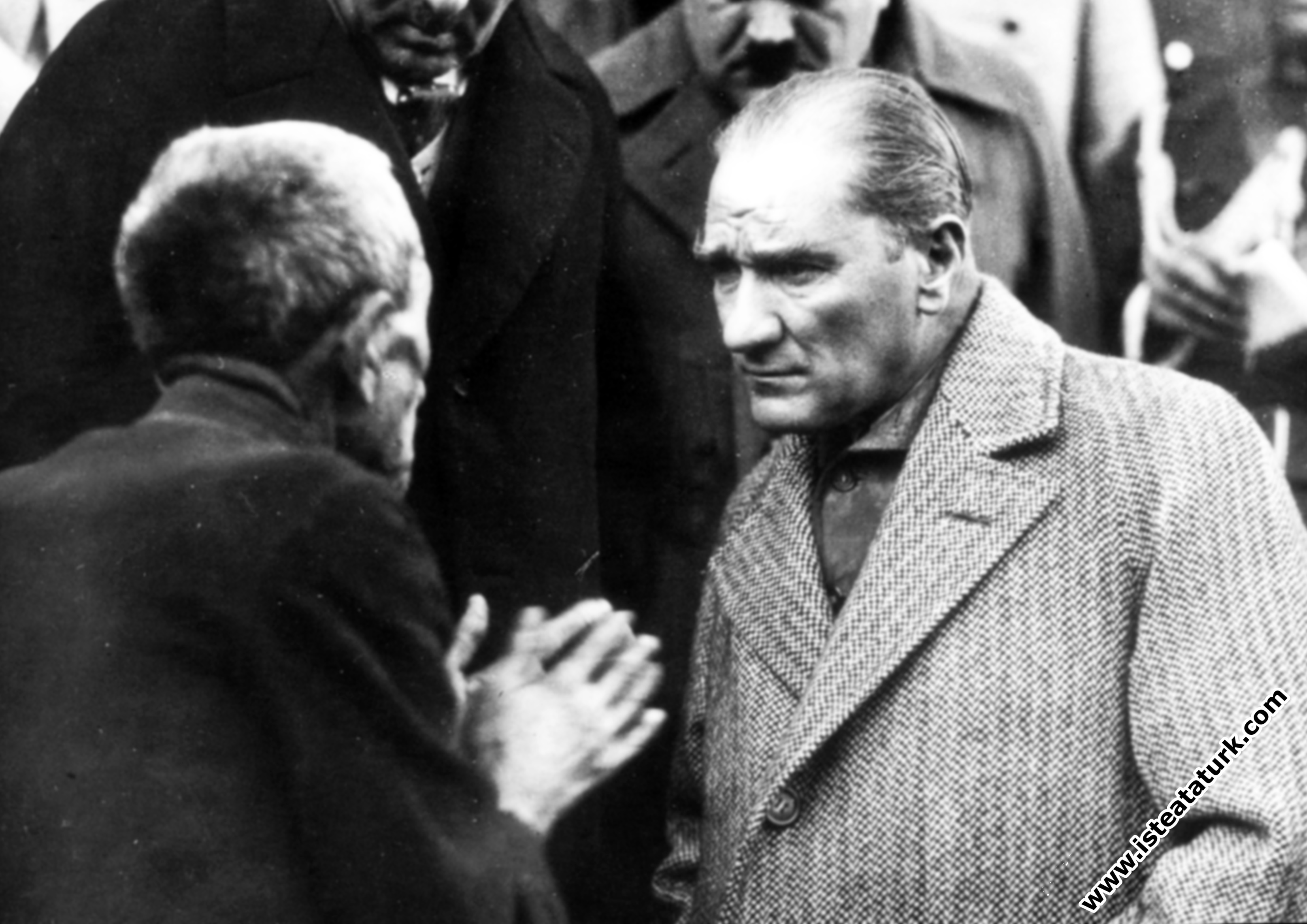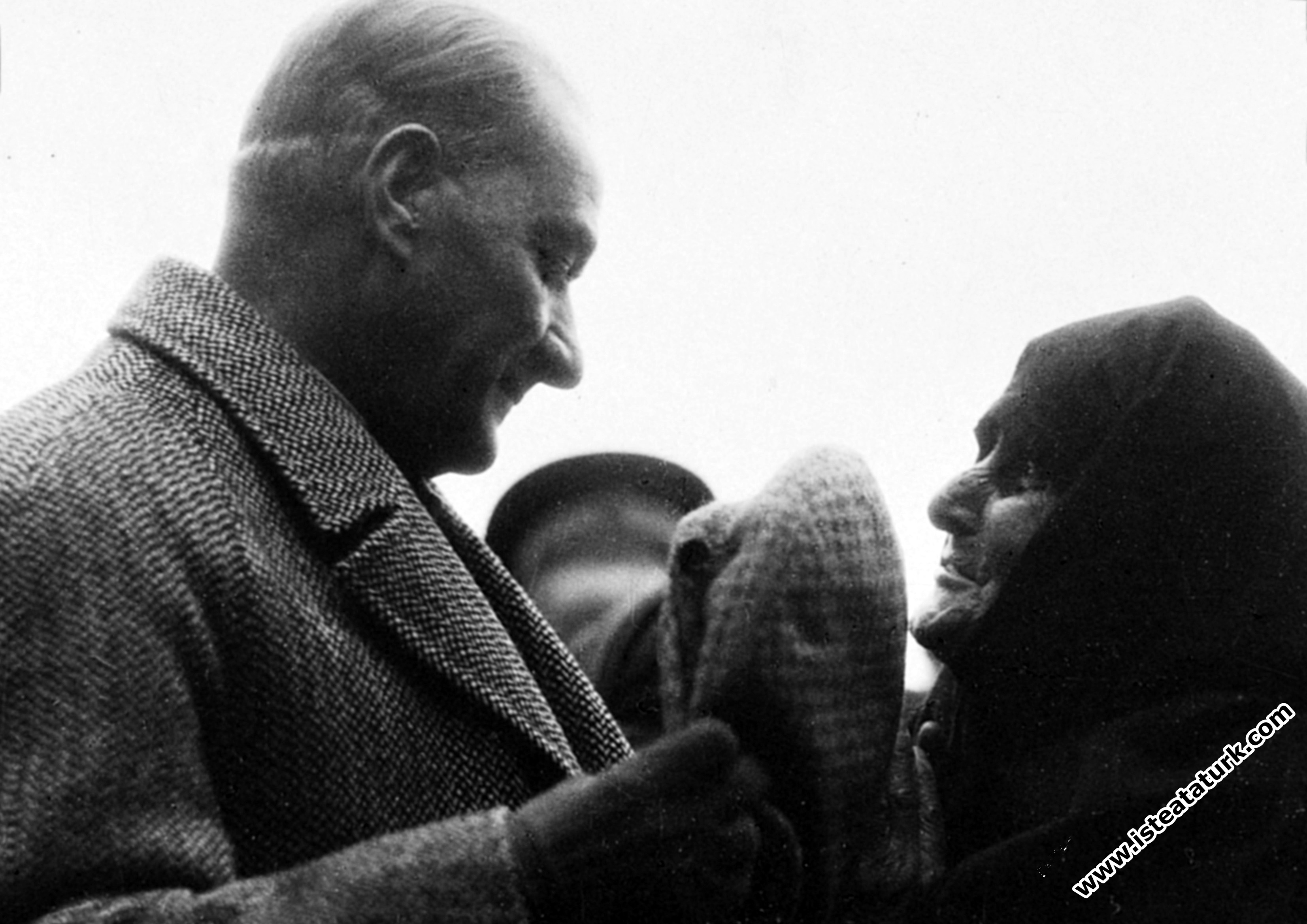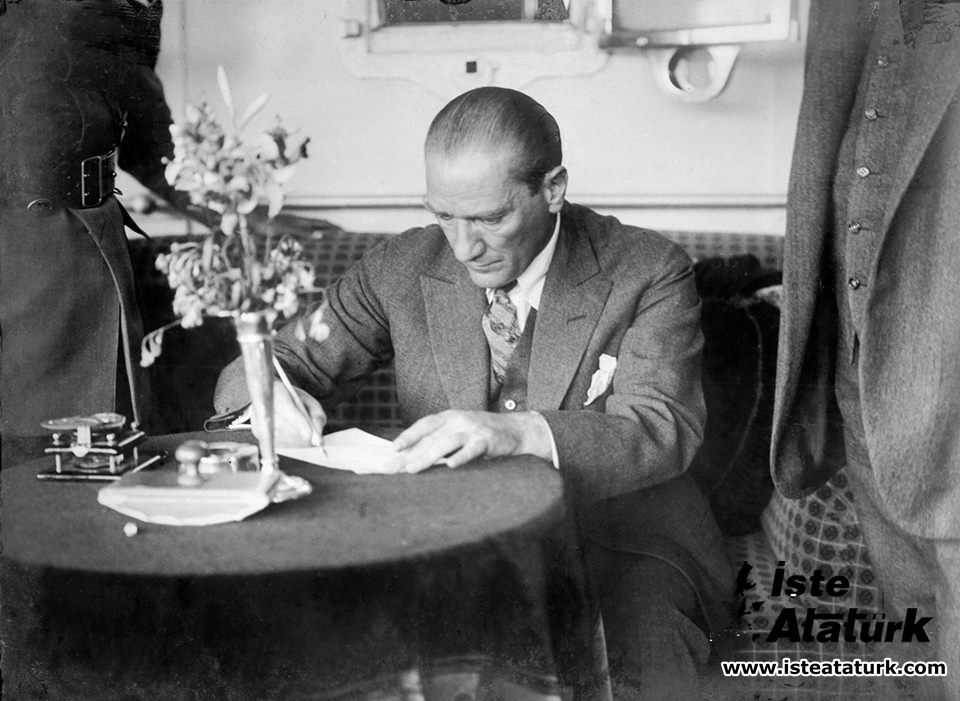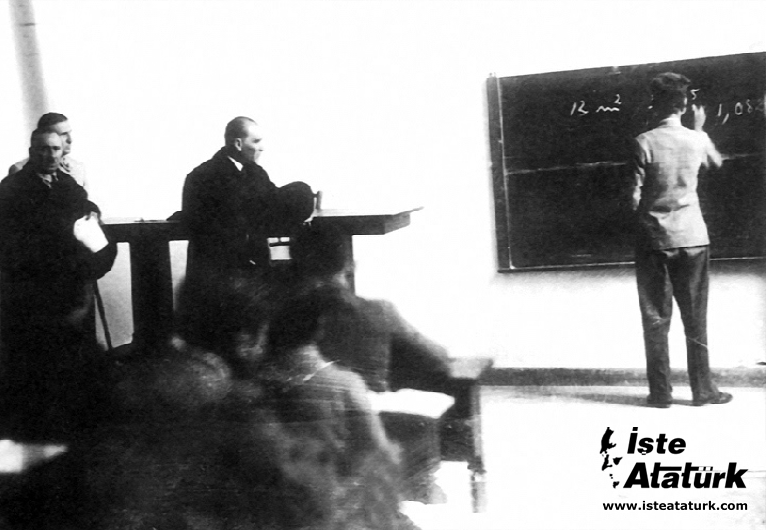Kemalist Thought System
Character Size
"As a spiritual heritage, I do not leave any solid, frozen, stereotyped principles. My spiritual heritage is science and reason..." Mustafa Kemal Atatürk
ATATURKIST THOUGHT SYSTEM
SUMMARY
Kemalism is the answer that emerges when faced with the danger of extinction of the Turkish country and the problem of what its future will be, and it is the belief system, action program and method that can be used to solve Turkey's current and future issues. The fact that Kemalism is based on science and reality, based on science and reality, is a source of strength for an ideology that responds and will respond to the basic needs of society. The Turkish revolution and the principles that shape it form a whole. These principles reveal the essence, direction and method of a society and state life, practices, initiatives.
The aim of Kemalism is to bring the Republic of Turkey to the level of contemporary civilization. This path is the only one and is the path of "Western Civilization". Its basic element is the “science mentality”.
Atatürk's principles are still the most accurate compass that will advance the Turkish nation on the path of civilization.
1.INTRODUCTION
In all human societies, various problems are encountered, from the danger of extinction to overproduction, depending on the period and conditions. Communities seek solutions to these problems and create answers according to their own era, conditions, possibilities and abilities1. Kemalism is the answer that emerges when faced with the danger of extinction of the Turkish country and the problem of what its future will be. The Atatürk event should not be regarded as just a summit, a remarkable event. Kemalism as an “intellectual heritage” should be understood as an ideology that still lives today, a belief system, action program and method that can be used to solve Turkey's current and future issues2. Atatürk's place and value on the world political flow is more clearly understood with the passage of time.
2. Is Kemalism an Ideology?
Ideologies are systems of thought and belief. There is general agreement that ideology is a way of thinking and constitutes the program of political action. What should be considered in ideologies; It is the harmony of thoughts and using them to achieve certain goals3. Ideologies that appear and emerge in this way are important as a goal and method for the administration of states. Ideologies emerge from long and rich thought activities and are often used for reforms in some societies. Revolutions derive their goals from the ideologies they have adopted.
Most of the ideologies were processed by the scientists and politicians who were their supporters before they were put into practice, and they were tied to the principles. In this context, Atatürk took advantage of the rational and humane ideologies of the west and created a synthesis himself4. However, they were not brought together and announced. Atatürk himself expresses this situation as follows: “… Of course, it would not be appropriate to explain and say all the necessities and difficulties of the decision on the first day. It was necessary to divide the practice into some phases, to prepare the feelings and thoughts of the nation by making use of the events, and to try to reach the goal by going step by step…”5.
As in every ideological revolution, the principles brought and based on the Turkish Revolution formed Kemalism. Therefore, it would be correct to call Kemalism an ideology6. The fact that Kemalism is based on science and reality, based on science and reality, is a source of strength for the ideology that responds and will meet the basic needs of the society. As a matter of fact, the degree of consistency of ideologies against their own structures and other systems, their chances of being successful and long-lasting are closely related to their scientific degree.
Atatürk strongly established his ideology with his thought system, actions, words and writings. Because its effects can be seen in the Middle East and Far East countries that are attempting development7.
3. What is Kemalist Thought System?
Atatürk's personality was determined by the conditions of the period in which he was born and lived. Atatürk's genius worked under these conditions. Thessaloniki, the city where Mustafa Kemal was born, was a city where people, languages, religions and thoughts met and merged8. With his French, which was the language of culture and diplomacy of the time, Mustafa Kemal was acquainted with the history of the world and was evaluating the current situation of his country with the experience he gained in his duties9. Mustafa Kemal's becoming one of the most outstanding representatives of his profession during the First World War and the maturation of his thoughts were in parallel.
The Kemalist thought system was formed in the environment where Mustafa Kemal lived, when he evaluated various events through his mind and interpreted with historical consciousness. Kemalism is a national ideology that has emerged from the needs and realities of the Turkish nation, which is based on the high values that humanity has cultivated for centuries10. So much so that, with this ideology, the country was freed from disintegration, a national state emerged and rose, and outdated social institutions changed through revolutions. While all of these were being realized, Atatürk acted within a certain plan11 and placed his basic ideas within this plan.
Kemalism is based on reason, knowledge and human love. This feature keeps it in a position that is suitable for processing and open to developments. Kemalism is constructive and creative and believes in the necessity of keeping up with the developing world12. Kemalist thought system is democratic and pragmatic13. Atatürk, the Minister of National Education of the time, Dr. He was giving the following answer to a question posed by Reşit Galip; “I do not leave any rigid, frozen, stereotyped principles as a spiritual legacy. My spiritual heritage is science and reason. Time goes by rapidly… To claim that in such a world there are provisions that will never change, would be to deny the development of reason and science. Those who want to adopt me from now on will be my spiritual heirs if they accept the guidance of reason and science on this basic axis.
The Turkish revolution and the principles that shape it form a whole. One of Atatürk's principles has no weight, priority or importance compared to the other. Republicanism, nationalism, populism, statism, secularism, and revolutionism are all important, weighty and necessary principles, each and every one of them. These principles, by enlivening the Kemalist world view, reveal the essence, direction and method of a society and state life, practices and initiatives15.
4. The Concepts of Kemalism and Kemalism
Some of the definitions made about Kemalism, which was called Kemalism during Atatürk's lifetime and in the 1930s, are as follows: “The name given to the sum of the basic principles that Mustafa Kemal Atatürk adopted in saving the Republic of Turkey and preparing the reforms… Kemalism is a part of Turkish independence and freedom. It is the general name of the ideas and movements whose slogan (symbol, sign) is to be understood on a wider scale and that is always aimed (orientated) to rise and progress, without attributing it to any political party…”16
Kemalism is the administration based on the realities arising from the life of the nation17. Atatürk's ideal, philosophical and effort, to create a society in which science and reason predominate in Turkey, based on a political and ideological understanding of independence, and thus to give the Turkish nation the place it deserves without losing its social and historical personality in western civilization 18. Originating from Atatürk's thoughts and practices; Aiming at the independence and integrity of the Turkish State, national sovereignty, personal freedom, being modern; It is a set of universally weighted, future-oriented, compatible goals and practices and principles that are based on reason, science and reality19. It is the whole of ideas and events that emerged from Atatürk and developed with him20.
The basic ideas on which the Turkish revolution is based with its constructive power have become a system and become the principles that express value in the future and guide our social life.
Kemalism is systematized ideas that emerged from the realities of Turkey. On the one hand, it includes the National Struggle as a whole, and on the other hand, it covers the radical changes made in the society. In short, Kemalism is the ideal of the Turkish revolution with its systematized intellectual power and future-oriented aspect21.
The common points in all these definitions are that the concept of Kemalism derives from that great man and aims to raise the Turkish nation to the level of contemporary civilization, thus forming the "National Modernization Ideology"22.
5. The Characteristics of the Kemalist Thought System
Great Leader Mustafa Kemal, in his speech on August 30, 1925 in Kastamonu, stated the purpose of his ideology as follows; “Sirs, the aim of the revolutions we have made and are making is to bring the people of the Republic of Turkey to a completely modern and civilized society in all its meaning and form.”23
Kemalism is dynamic of principles in practice. considers its constructive and guiding function. It always foresees to direct the life of the state and society in line with the principles of the national revolution. He accepts that with this method, he can reach the level of contemporary civilization24.
Making public services continuous and uninterrupted in accordance with the needs of our age and benefiting from the findings of contemporary politics and science are the minimum and compulsory requirements of the Kemalist thought system. The concept of independence, which expands in dimensions, is “complete independence”. In order to be fully independent, to live fully independently, it is necessary to be contemporary25.
The Turkish Revolution, which took place under the leadership of Mustafa Kemal Atatürk, is the name of a national independence and modernization movement. It is a social reformation.
It is a Turkish renaissance based on humanism, as it is based on national independence, free thought and human dignity26. This change is interpreted by the Turks as a modernization, that is, a transition to a more developed and more advanced type of social order27.
6. Conclusion
Atatürk's thought and progress are confronted with a leader who does not stay within his own borders, whose thoughts and practices create an impact on other subjects and events, and the series of events led by him, with the whole of universal thoughts.
The basic elements that are the basis of the values that Atatürk brought and our expectations from Kemalism are the mind and science that Atatürk calls "my spiritual heirs".
The aim of Kemalism is to bring the Republic of Turkey to the level of contemporary civilization. This way is the only one and is the way of Western civilization. Its basic element is the “science mentality”.
New cadres, who can meet the future needs as individuals and as a nation, can grow up within the framework of a solid culture that will be formed by the principles of Kemalism based on freedom, reason and knowledge. The values we have with Atatürk are the independent nation state, national sovereignty and secular mentality. The protection and development of these and the aim of being modern in every period are the essential principles of our existence. The main principles of the Great Ancestor are the most accurate compass that will advance the Turkish nation on the path of civilization both today and in the future.
7. Resources
Arat, E., 1981, What is Kemalist Thought System? Bogazici University. International Atatürk Conference, 9-13 November 1981, Istanbul. 1-20).
Baltacioglu, I. H. 1973, Atatürk (Growing Up, Personality, Revolutions), 50th Anniversary of the Republic, Erzurum; Ataturk University. Printing house.
Bozdağ, İ., 11 November 1973, Atatürk's Sources of Intellect, Milliyet…………, 1996, Atatürk's Universal Dimensions, Ankara; TR. See Culture. National Library Presidency Publishing House.
Çağatay, N., 8 November 1988, Atatürk's Revolutions Tools and Jokes, Belleten, C.LII, S.204, Atatürk Special Issue, TTK Press, (993-1002).
Çaycı, A., November 1988, Atatürk's Understanding of Civilization, Belleten, C.LII, S.204, Atatürk Special Issue, TTK Press, (1105-1117).
Erkun, S., July 1990, Integrity and Harmony Between Atatürk's Ideals and Principles, Journal of Atatürk Research Center, C.6, P.18, (493-505).
Eroglu, H., 1981, Kemalism, Ankara.
Eyice, S., Thessaloniki at the Years of Atatürk's Birth, Atatürk's 100th Anniversary, Istanbul; Ist. Uni., Faculty of Literature.
Feyzioğlu, T., November 1986, National Liberation Leader Atatürk and His International Effect, Journal of Atatürk Research Center, C.III, P.7, (13-48).
Giritli, İ., 1981, Kemalism and Modernization, Boğaziçi University. Proceedings of the International Atatürk Conference, 10-11 November 1980, CI, (93-105).……… , 1992, Atatürk Ideology, Atatürkist Thought, Atatürk Research Center (67-72).
İlhan, S., 1992, Atatürk's Values and Our Expectations from Kemalism, Atatürkist Thought, Atatürk Research Center, (57-66).
İnalcık, H., 1988, Atatürk and Turkey's Modernization, Belleten, C.LII, S.204, (November 1988), Atatürk Special Issue, TTK Press, Ankara. (985-992).
Kaynar R., March 1986, Kemalism, Journal of Atatürk Research Center, C.II, P.5, (289-309).
Kili, S., 1981, The Method of Real Approach to Kemalism. Bogazici University. International Atatürk Conference, 9-13 November 1981, C.II, P.42, Istanbul, (1-9). ………, 1998, Atatürk Revolution, A Modernization Model, Istanbul
Koca, S., October 1983, Struggles for Independence in Turkish History, Historical Foundations of Atatürk's Idea of Independence, Milli Kültür, p.42. Culture and Tourism. Pub., Ankara, (7-13).
Kuran, E., 1981, Essays on Kemalism, Ankara; See Culture. Arrow.
Meydan Larousse , 1992, C.11, 2, (Sabah Newspaper), Istanbul.
Mumcu, A., 1992, Kemalism Ideology (Ataturkist Thought System), Kemalist Thought, Ataturk Research Center (71-81).
Mumcu, A., Özbudun, E., Feyzioğlu, T., Ülken, Y., Çubukçu, İ. A., 1986, Principles of Atatürk and History of Revolution II, Ankara; Higher Education Council Spring.
Gazi Mustafa Kemal (Atatürk), Speech-Discourse I, 1981, Ankara; TTK Publishing House.
Şahin,R., 1989, Ideology and Kemalism New Forum, C.10, P.246, (35-42).
TR. General Staff Military and Strategic Studies, 1981, Atatürk in its Universal Perspective, Atatürk Publications, General Staff Printing House.
Taneri, A., 1982, Method of Interpretation of Atatürk's Principles, Ankara; Ankara University. Printing house.
Timurtaş, KF, 1968, Understanding Atatürk, Ata Yolu, Special Issue (10 November 27 December), Ankara. Tunaya, TZ, 1981, Atatürk and Kemalism in Revolutionary Movements, Istanbul.
Turkish Dictionary, I, 1998, Turkish Language Association, Ankara.
Yalçın, ES Güler A., 2000, Atatürk, His Life, Thoughts, and Personality, Volume Three, Ankara; Berikan Electronic Publishing.
Yalçın, ES, November-December 2002, Atatürk in Turkish Modernization, GÜ. NEWS Bulletin, p.40, p.12.
Yücel, Y., November 1998, Principles of Atatürk, Belleten, C.LII, S.204, Atatürk Special Issue, TTK Press, (807-824).
1 Recep Şahin, “Ideology and Kemalism” YeniForum, Vol.10, P.246, (1-15 December 1989), (35-42), p.35.
2 İsmet Giritli, “Atatürk Ideology”, Atatürkist Thought, Atatürk Research Center 1992, (67- 72), p.67; Suat İlhan, “The Values Atatürk Gained and Our Expectations from Kemalism”, Atatürkist Thought, Atatürk Research Center, 1992, (57-66), p.57.
3 Cretans, agms70.
4 Ahmet Mumcu, “Ideology of Ataturkism (Ataturkist Thought System)”, Kemalist Thought, Ataturk Research Center 1992, (71-81), p.73,75; Ahmet Mumcu, Ergun Özbudun, Turhan Feyzioğlu, Yüksel Ülken, İ. Agah Çubukçu, Atatürk's Principles and History of Revolution II, Higher Education Board Spring, Ankara, 1986, p.7.
5 Gazi Mustafa Kemal (Atatürk), Speech-Discourse I Volume, TTK Press, Ankara, 1981, p.21.
6 Mumcu. ag.ms79; Suna Clay, “The Method of Real Approach to Atatürkism”, Boğaziçi University International Atatürk Conference, 9-13 November 1981, C.II, P.42, Istanbul, 1981, (1-9), p.1.
7 Atatürk in its Universal Aspect, TC. General Staff Military and Strategic Studies, Atatürk Publications, General Staff Press, 1981, p.9; Reşat Kaynar, “Ataturkism”, Journal of Atatürk Research Center, C.II, (March 1986), P.5, (289-309), p.289; Turhan Feyzioğlu, “The National Liberation Leader Atatürk and His International Impact” Atatürk Research Center Journal, C.III, (November 1986), P.7,(13-48), p.43.
8 Semavi Eyice, Thessaloniki at the Years of Atatürk's Birth, A Gift to Atatürk on the 100th Anniversary of His Birth, İst. Uni., Faculty of Literature. p.486,487.
9 Neşet Çağatay, “Means and Humor of Atatürk's Revolutions”, Belleten, C.LII, P.204, (November 1988), Atatürk Special Issue, TTK Press, 1988, (993-1002), p.997; Emin Arat, “What is the Atatürkist Thought System?”, Boğaziçi University. International Atatürk Conference, 9-13 November 1981, Istanbul. 1981,(1-20), p.2.
10 See. Salim Koca, “The Struggles for Independence in Turkish History, The Historical Foundations of Atatürk's Idea of “Full Independence”, Milli Kültür, P.42, (October 1983), Culture and Tourism Bak. Pub., Ankara,(7-13).
11 Kili, agts134.
12 İsmail Hakkı Baltacıoğlu, Atatürk (Growing Up, Personality, Revolutions), 50th Anniversary of the Republic, Atatürk University. Press, Erzurum.1973, p.54.
13 Yaşar Yücel, “Atatürk's Principles”, Belleten, C.LII, P.204, (November 1998), Atatürk Special Issue, TTK Press, 1998, (807-824), p.807;
14 Cretans, agms71;” The system freezes life…even if at first it is a cradle for a civilization, it eventually becomes a grave for humanity”. İsmet Bozdağ, “Atatürk's Sources of Ideas”, Milliyet 11 November 1973.
15 Kili, agts7; Ercümend Kuran, Essays on Kemalism, Culture Bak. Arrow. Ankara, 1981, p.10; Safa Erkün, “Integrity and Harmony Between Atatürk's Ideal and Principles”, Journal of Atatürk Research Center, C.6, (July 1990), P.18, (493-505), pp.494,495.
16 İbrahim Alaaddin Gövsa, New Illustrated Dictionary and Encyclopedic Dictionary, C.III. p.1420.
17 Turkish Legal Dictionary, Ankara, 1943, p.197.
18 Meydan Larousse, C.11, (Sabah Newspaper), Istanbul, 1992, p.149; C. 2, p.253.
19 Turkish Dictionary, I, Turkish Language Institution, Ankara, 1998, p.155.
20 Tarik Zafer Tunaya, Ataturk and Kemalism in Revolutionary Movements, Istanbul, 1981, p.132.
21 Hamza Eroğlu, Kemalism, Ankara, 1981, p.7.
22 Atatürk, one of the darkest days of the national struggle he entered as an individual nation, until he passed away in 1938, "to become civilized", "to enter the community of civilized nations", to rise above the level of contemporary civilization by acquiring it", "to modernize" and to become westernized. ”, he insisted on; Abdurrahman Çaycı, “Atatürk's Understanding of Civilization”, Belleten, C.LII, p.204, (November 1988), Atatürk Special Issue, TTK Press, (1105-1117), p.1105; Giritli, “Kemalism and Modernization”, Boğaziçi University. Proceedings of the International Atatürk Conference, 10-11 November 1980, CI, 1981, (93-105), p.105.
23 Herbert Melzig, Atatürk's Major Speeches (1920-1938), Ülkü Press, Istanbul, 1942, p.93.
24 Kili, agts140.
25 Kili, Ataturk Revolution, A Modernization Model, Istanbul, 1998, p.6,7.
26 Cretan, agms67.
27 Halil İnalcık, “Atatürk and Turkey's Modernization” Belleten, C.LII, P.204, (November 1988), Atatürk Special Issue, TTK Press, Ankara, 1988, (985-992), p.985; In Atatürk's thought system, creating a renaissance in Turkish culture within its own values and characteristics was the main goal. E.Semih Yalçın, “Atatürk in Turkish Modernization”, Commemorated with Respect on the 64th Anniversary of the Great Leader Atatürk's Eternity, GÜ, NEWS Bulletin, November-December 2002, p.40. p.12; E. Semih Yalçın, Ali Güler, Atatürk's Life, Thoughts and Personality, Volume Three, Berikan Press and Publishing, Ankara, 2000, p.47; Suat İlhan, Values Brought by Atatürk and Our Expectations from Kemalism, Kemalist Thought, Atatürk Research Center, 1992, (57-66), p.66; Atatürk wanted himself to be fully understood and known. As such is the nature of great manhood, This was the basic principle of being western and the western mentality that Atatürk showed as a target. Faruk K. Timurtaş, “Understanding Atatürk”, Ata Yolu, Special Issue (10 November 27 December), Ankara, 1968, p.13; Aydın Taneri, Atatürk's Principles Interpretation Method, Ankara Uni. Press, Ankara, 1982, p.23; Erkun, agms497. Cayci, agms1116; İsmet Bozdağ, Atatürk's Universal Dimensions, TC. See Culture. National Library Presidency Press, Ankara, 1996, p.156; Ercümend Kuran, aged 12. National Library Presidency Press, Ankara, 1996, p.156; Ercümend Kuran, aged 12. National Library Presidency Press, Ankara, 1996, p.156; Ercümend Kuran, aged 12.
Yaşar ÖZÜÇETİN
Gazi University, Kırşehir Faculty of Arts and Sciences, Department of History
Source: GAZİ ÜNİVERSİTESİ KIRŞEHİR EĞİTİM FAKÜLTESİ, Cilt 6, Sayı 1, (2005), 59-65
